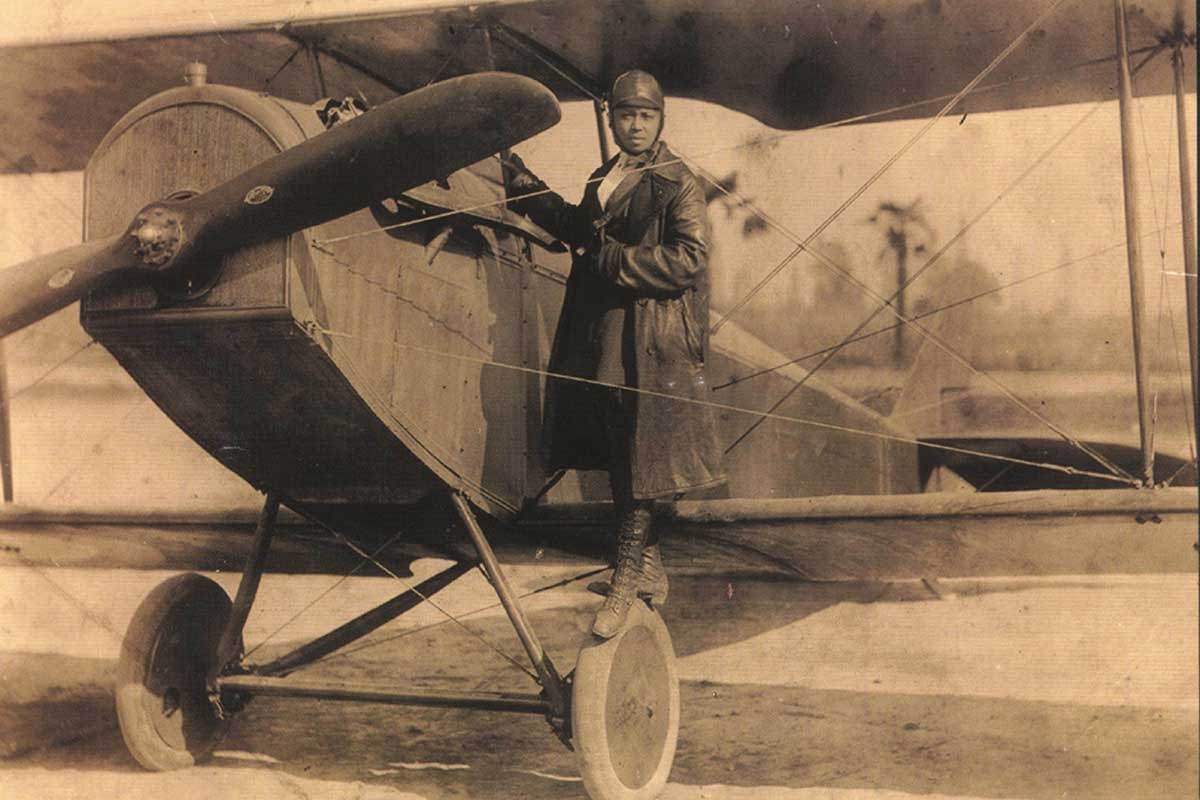Jim Crow segregation laws seemed to have a grasp like gravity on Bessie Coleman —as they did for most African Americans in the early 20th century—keeping her from rising very high in life.
Coleman, born in 1892 in Atlanta, Texas, to an African American maid and a Native American sharecropper, spent her youth picking cotton. She likely never dreamed she would go on to become the first African American woman and first Native American woman to earn a pilot’s license—two years before Amelia Earhart earned hers—100 years ago.
When she was 23, Coleman moved in with two of her brothers and found work as a manicurist in Chicago. Her brother John, who served in Europe during World War I, drunkenly teased her one day about the wider range of opportunities for women in France. He told her, “Women ain’t never goin’ to fly, not like those women I saw in France,” according to Queen Bess: Daredevil Aviator, a biography by Doris L. Rich.
Coleman took that as a challenge and responded, “That’s it! You just called it for me.” She decided to head to France, where she would face fewer obstacles for being Black and a woman.
After spending her nights learning French and days managing a chili restaurant, Coleman sailed to France and found a pilot to train her. Seven months later, she earned her pilot’s license from the Fédération Aéronautique Internationale, on June 15, 1921.
Back in the U.S. a year later, she became the first Black woman to perform in an air show. She toured the country making speeches, executing tricks, stunting like a daredevil and working as an activist against discrimination. Coleman, nicknamed Queen Bess, had a reputation for refusing to perform for segregated audiences. Using money she earned from barnstorming, she purchased her own plane, a Curtiss JN-4.
Tragedy struck during a test flight April 30, 1926, over Florida, when a loose wrench jammed the control gears and flipped the plane upside down. She wasn’t wearing her seat belt, and the plane had no canopy. Coleman, 34, fell to her death.
Black newspapers gave her death front-page coverage, but the mainstream press barely noted it. In 2019, The New York Times, as part of an effort to recognize the lives of remarkable people whose deaths went unreported at the time, ran a complete obituary. “Coleman saw aviation as a way to empower Black people in America and dreamed of opening a flight school,” it wrote. “Future pilots said they had been inspired by her, and flight clubs have been named in her honor.”
The Challenger Air Pilots Association of Chicago began an annual tradition of flying over Coleman’s grave there in 1931. The U.S. Postal Service issued a stamp in her honor in 1995 after Marion Coleman, Bessie’s niece, persistently petitioned for it. Texas historical markers stand in Atlanta and Waxahachie, Bessie’s former hometowns.
A great-niece, Gigi Coleman, portrays Bessie Coleman in a one-woman show that she performs around the country.
“When I do my performance, people cry,” Gigi Coleman says. “I’m very proud to be a relative of hers. She was a trailblazer, and she didn’t take no for an answer.”
Ainsley Shaw wrote this story during her senior year at Leander High School. She participated in Career Opportunities on Location Week, which allows seniors to shadow professionals in a career they’re interested in. She spent a week with the staff of Texas Co-op Power. Now Shaw studies at Maastricht University in the Netherlands and will graduate in 2024 with a Bachelor of Arts and Culture. She intends to obtain a master’s degree, become a journalist and travel to as many places as possible.


